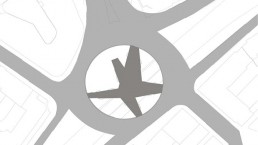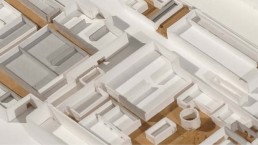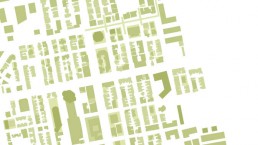THE HIDDEN CAMPUS
MASTER THESIS
WS 17/18
The design area - a 20 ha former medical campus - is located north of the city center of Shenyang, China. The campus was built by the Japanese in World War II. After loosing the medical use a few years ago, the historical buildings were preserved. They are partially protected as historical monuments. The campus is nowadays forgotten, the remaining buildings are empty and have fallen apart.
Currently in the direct vicinity of the campus a large hospital complex is being built. With a new attention being drawn to the campus disused areas, there is a chance to revalue and reuse the place. In an attracticve innercity location, a lively neighborhood can be developed that, in contrast to the original use, is no longer bounded by walls, but connects the neighboring districts. Accordingly, the purpose of this design proposal is to create a city district with its own identity, which distinguishes itself from the surrounding environment without creating strict borders. A framework of public open spaces connects the existing and the supplemented buildings into a new campus, creating a usable green center.
As a focal point, a Museum of History is located at one of the edges of this new open space. For this purpose, one of the campus historic building is reused and ehanced with a new section. Behind the neoclassical portal, modern and spacious interiors surprise the visitor. You enter a small foyer and reach the old and new building through a high passage, the events and administration rooms and the restaurant. In each of the two building courtyards there is a garden. Both present and explain the different garden cultures of Japan and China and thus interpret the theme of the museum in open space.
| Author/s | Wenting Li |
| Phase | Master Thesis |
| Categories | Studio |




